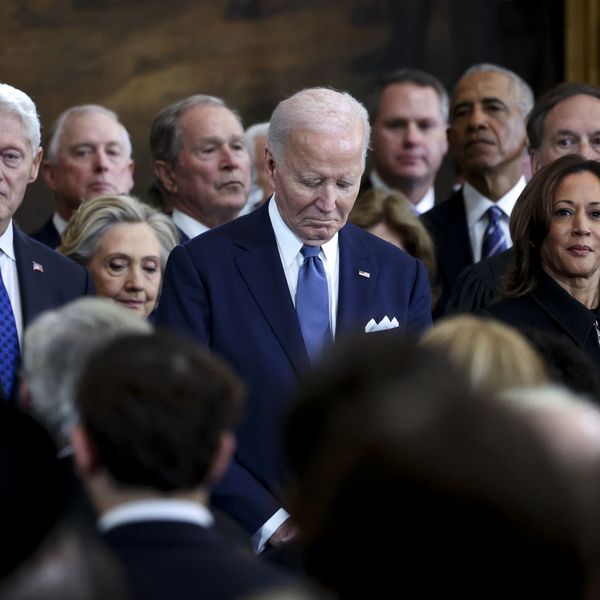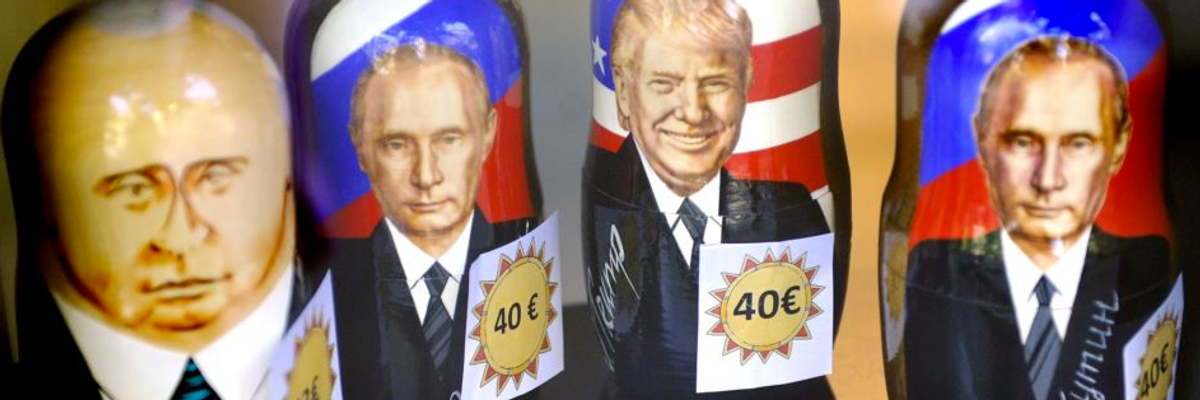This Monday, Russian President Vladimir Putin and United States President Donald Trump will meet in Helsinki. Nuclear weapons and the possible extension of the New START arms control treaty appear to be on the agenda. As these two nations possess 92% of the world's entire nuclear arsenal, preventing a new arms race that will lead to Mutually Assured Destruction is imperative. How? A first, essential, step would be avoiding a closed-door meeting between the two leaders, learning from the muddled results and vague "agreement" after the Singapore summit between Trump and North Korea Leader Kim Jong-un last month.
The New Strategic Arms Reduction Treaty (New START) was signed in April 2010, and will expire in 2021. It replaced both the Treaty of Moscow and START I, and was meant to significantly limit the number of strategic nuclear weapons the U.S and Russia could deploy. Both countries agreed to reduce their arsenal to a maximum of 1550 deployed strategic warheads, 700 deployed strategic missiles and bombers, and 800 deployed and non-deployed strategic missile launchers and bombers.
So did it work? As a matter of fact, it did. Under the agreement, Russia has reduced its warheads by 65%, and the number of deployed missiles and bombers by 65%. If the two countries could extend the New START treaty, the U.S. could save billions of taxpayer dollars from $1.7 trillion currently slated for nuclear forces "modernization."
However, after Trump was elected in 2016, when speaking on the phone with Putin, he referred to New START as a "bad deal" that unfairly favored Russia. This adds to the already increasingly tense relationship between the two countries, and the two leaders, fuelled by NATO expansion as well as the Russian invasion of Ukraine and annexation of Crimea. In these circumstances, some have argued that agreeing to extend New START may signal President Trump's willingness to accommodate Putin's wishes, putting him at a disadvantageous position, particularly with the Mueller investigation still underway.
On the other hand, President Trump did recently acknowledge that the "ultimate deal" with Putin would be "no more nuclear weapons." Exactly. How to achieve that, though? The answer is quite straightforward: begin with extending New START. Also, agreeing with President Putin would give him the leverage to address Russia's violations of the Intermediate Nuclear Forces Agreement (INF).
Unfortunately, none of this is likely to be accomplished in a closed-door meeting, away from public scrutiny. President Trump has already demonstrated a fluctuating temperament, leading to conflicting statements and actions. His "exclusive" meeting with North Korean leader Kim Jong-un resulted in an inconclusive agreement. Each party interpreted it differently according to its preference, as we saw with the unsatisfactory follow-up meeting between Kim and Secretary of State Mike Pompeo.
The same could happen on Monday. What if, behind closed doors, Trumps accepts the annexation of Crimea? But, most importantly, what if he decides that no agreement is needed to reduce nuclear warheads?
The idea that two single countries, the United States and Russia, have built enough "doomsday machines" to destroy life on Earth has previously been compared to Nazi plans for genocide. In both cases, during the Second World War, the extermination of thousands of lives was the result of calculated industrial processes. In 1945, an estimated 135,000 people died in Hiroshima, and 64,000 in Nagasaki. In less than three weeks, it will be the anniversary of the detonation of these two atomic bombs (August 6 and 9).
No country, let alone solitary men, should have the power to cause such destruction. Thus, Trump and Putin need to start the process of pulling the world back from the current, dangerous nuclear standoff, by extending the New START agreement. In order for this to happen, the meeting between the two leaders should be an open negotiation with careful recordkeeping on both sides. In this fashion, Trump and Putin might achieve concrete progress and the beginning of a regular dialogue to reduce nuclear weapons risks and avoid a new nuclear arms race.



